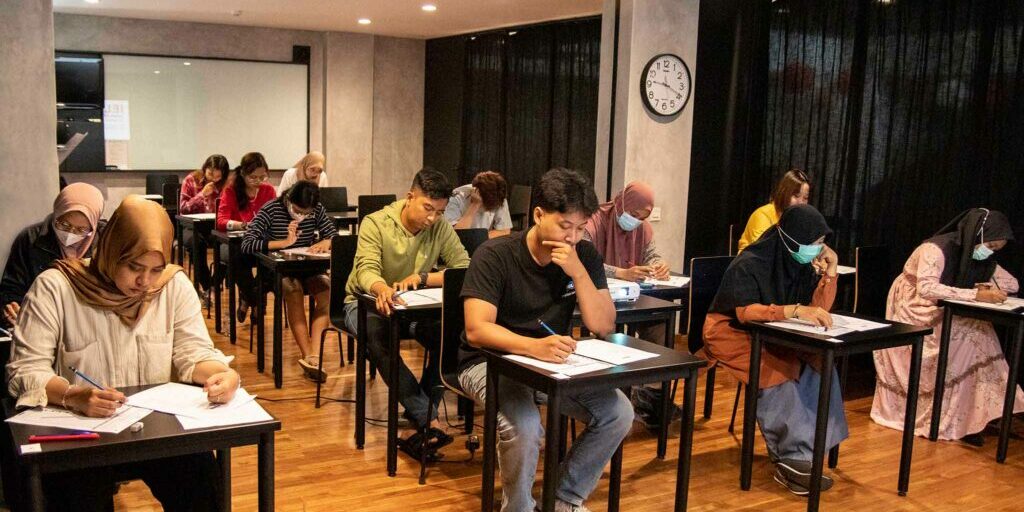
Classroom layout 101: exploring effective seating arrangements
Welcome, teachers and educators!
Remember those days in school when the biggest excitement was walking into the classroom to discover that the seats had been rearranged?
Maybe you were thrilled to be seated next to your best friend, or perhaps you cringed at the thought of being stuck in the front row…
As teachers, we’re always looking for ways to enhance the learning environment, and believe it or not, where our students sit can play a pivotal role!
So let’s deep-dive together into the art and science of classroom seating arrangements!
From traditional rows to collaborative clusters, let’s uncover the potential each layout holds for our teaching strategies and our students’ learning experiences.
1. Traditional row

- Psychological implications: This configuration might make students feel they’re in a strict environment where discipline is emphasized. For some, it can be comforting due to the structure, while for others, it can feel restrictive.
- Pedagogical implications: This layout aligns with a teacher-centric model where knowledge transmission from teacher to student is prioritized. Research suggests it can reduce distractions and is most suitable for tasks requiring concentration and individual work.
- Practical implications: Easy to set up and ideal for large classrooms. Facilitates easy movement for the teacher for monitoring purposes.
- Advantages: Easy to monitor students; students have individual space; limits distractions.
- Disadvantages: Limited group interaction; may not be conducive to collaborative learning. Students who sit in the back rows, either by choice or assignment, may feel more detached from class activities and might be more prone to distractions.
2. U-shape
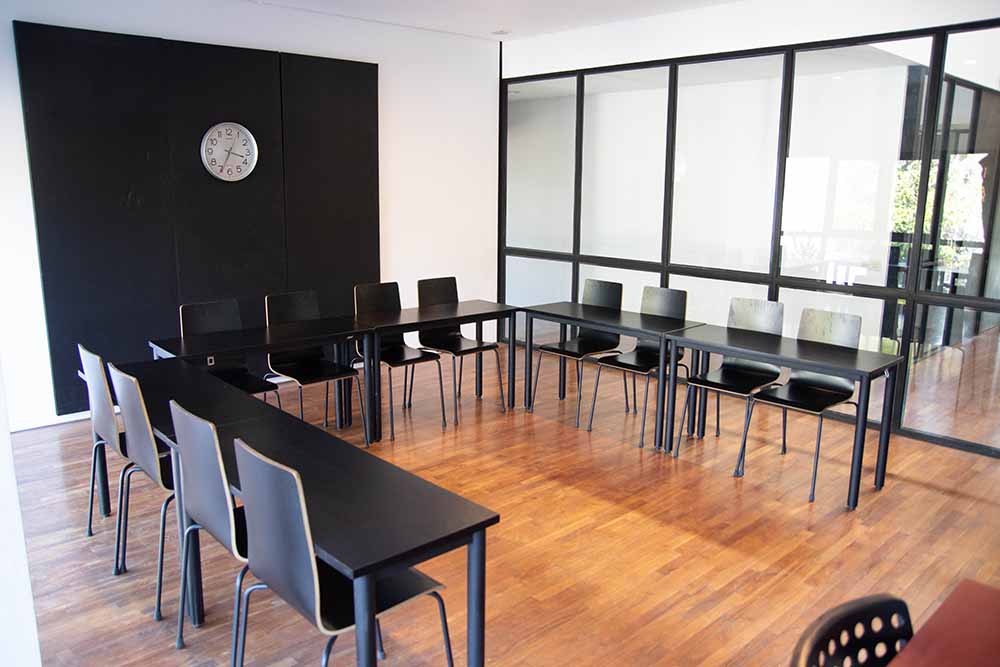
- Psychological implications: This facilitates an inclusive environment. The teacher can engage with students more personally, and students can see each other, promoting a sense of community.
- Pedagogical implications: Ideal for classes where active participation, discussion, and interaction are encouraged. The teacher can engage with each student more effectively.
- Practical implications: Requires ample classroom space. Some students might be farther from the board, requiring strategic seating based on visual needs.
- Advantages: Facilitates class discussions; teachers can easily move and interact with all students, every student has an unobstructed view of the board, the teacher, and other students.
- Disadvantages: Even though everyone can see each other, students seated at the ends of the U might be less likely to participate than those in the center or directly opposite the teacher.
3. Clusters or pods
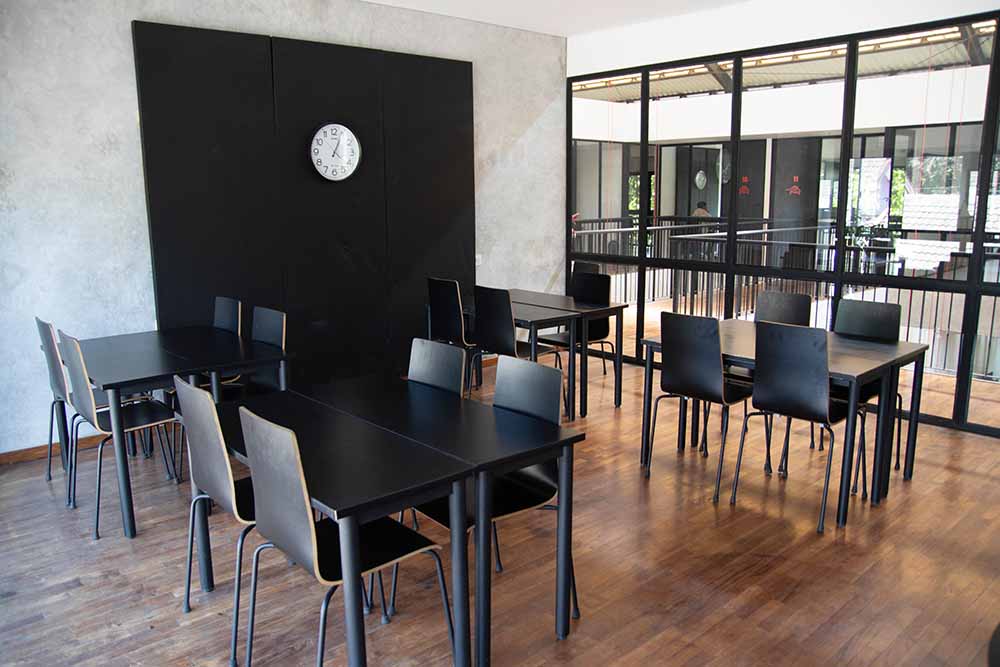
- Psychological implications: Can create a sense of team and collaboration. However, potential for cliques or comfort-zone seating where students stick to close friends.
- Pedagogical implications: Enhances collaborative learning and group tasks. But, can lead to off-task behavior if not monitored effectively.
- Practical implications: Allows for flexibility in group sizes. However, it requires strategic placement to ensure all students can see the front and hear instructions.
- Advantages: Encourages group work and discussions; students can collaborate and help each other. Teachers can group students based on skill levels, learning styles, or other criteria to provide targeted instruction.
- Disadvantages: Can be noisy and distracting; harder for teachers to monitor all students. Not all students work well in group settings, and there’s the potential for personality clashes or some students dominating discussions.
4. Circle or semi-circle
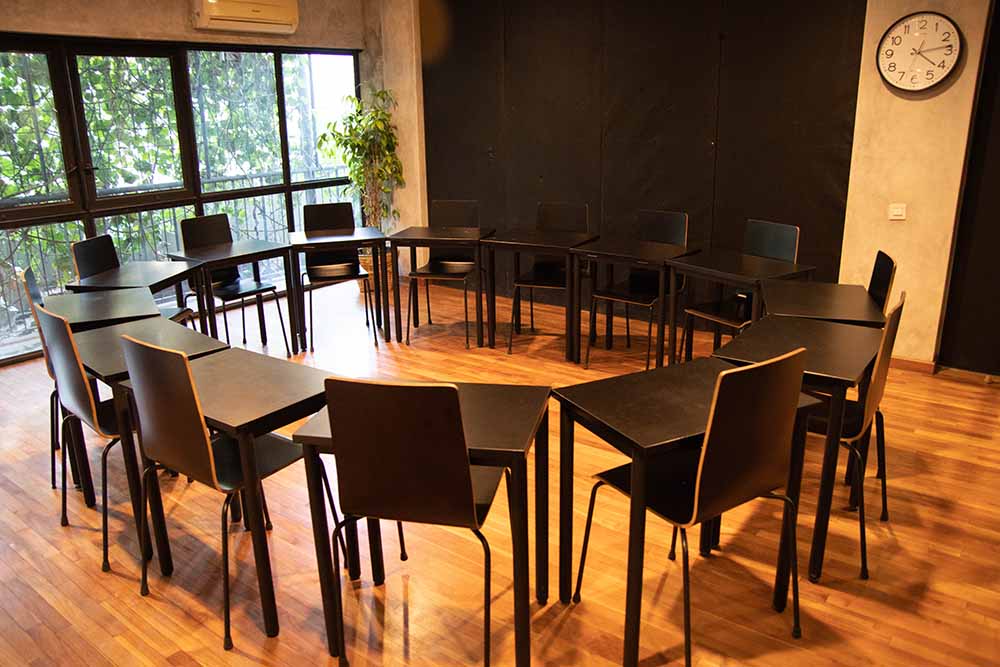
- Psychological implications: Encourages equality, as all students, including the teacher, are part of the circle.
- Pedagogical implications: Ideal for open discussions, debates, and sharing sessions. The teacher acts more as a facilitator than a central authority.
- Practical implications: Requires spacious classrooms. Not ideal for board-based instruction.
- Advantages: The circular formation suggests that every voice is valuable and no one person is more important than another, which can help in fostering mutual respect. With everyone in view, off-task behaviors can be more easily spotted and addressed.
- Disadvantages: Even though off-task behavior is more visible, the setup can lead to more visual distractions as students can see every one of their peers.
5. Pairing
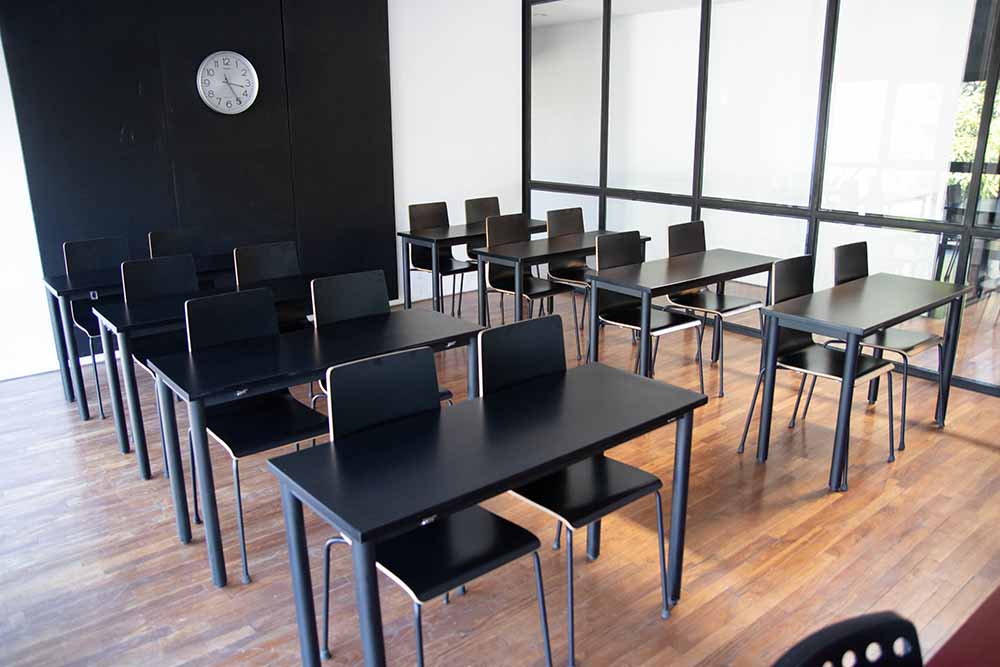
- Psychological implications: Can foster close collaboration and help in forming bonds, but can also be intimidating for some students if paired with someone they’re uncomfortable with.
- Pedagogical implications: Promotes peer tutoring, and immediate feedback. Great for activities that require discussion and collaboration but on a smaller scale.
- Practical implications: Allows for quick transitions between individual and paired tasks.
- Advantages: In pairs, each student has a better chance of actively participating and is less likely to get overshadowed as they might in larger groups.
- Disadvantages: Not all students work well together. Some pairings might result in conflicts or one student dominating; if not managed, a student might become overly reliant on their partner, especially if there’s a significant skill gap between them.
6. Theater style
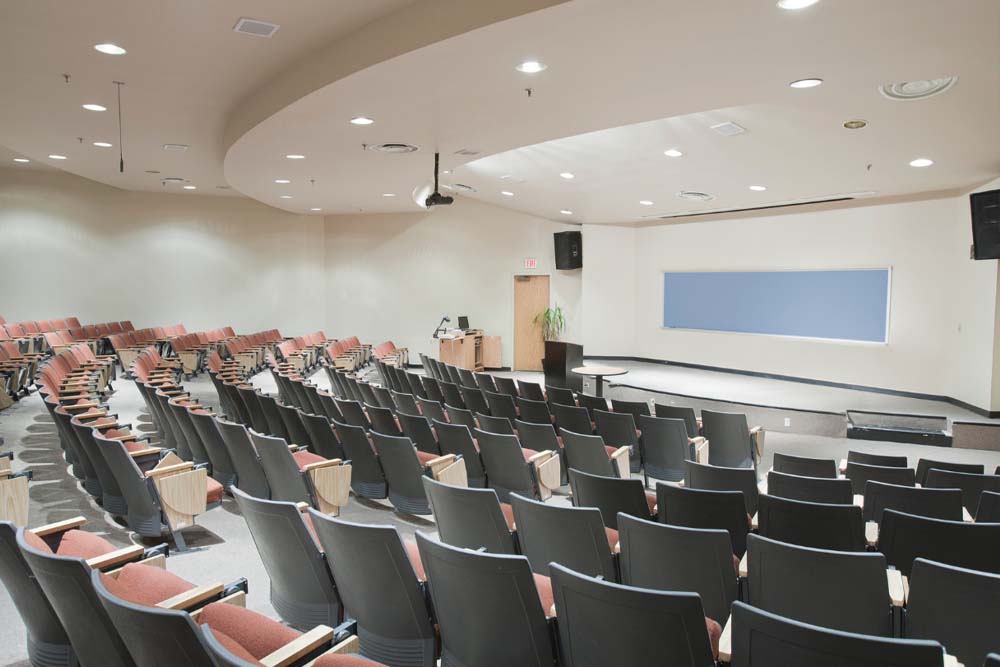
- Psychological implications: Students understand they’re in a passive consumption role, which can be either comfortable or disengaging.
- Pedagogical implications: Best for lectures, presentations, or viewing multimedia. Little to no interaction between peers or with the instructor.
- Practical implications: Maximizes seating but lacks space for note-taking or interactive work.
- Advantages: This setup can accommodate a large audience in a given space, making it ideal for lectures or presentations with a high number of attendees; the setting creates a formal environment, reinforcing the seriousness and importance of the lecture or presentation.
- Disadvantages: The format is primarily speaker-centric, offering little opportunity for audience participation, interaction, or group activities. Keeping the attention of a large audience can be challenging, especially for extended periods.
7. Fish bowl
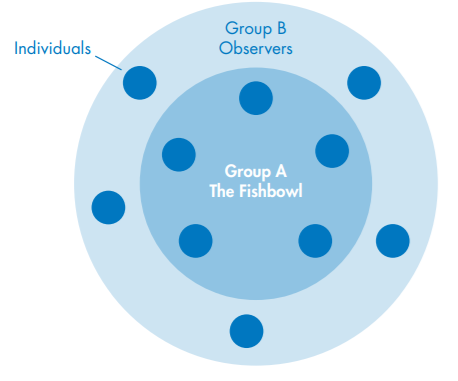
- Psychological implications: Inner circle students might feel on the spot or pressured, while outer students can feel both observant and eager to participate.
- Pedagogical implications: Effective for deep-diving into specific topics. The inner group actively participates, while the outer group learns through observation, waiting for their turn to engage.
- Practical implications: Requires clear ground rules for participation and rotation. Requires a spacious classroom for effective implementation.
- Advantages: The fishbowl technique allows for deeper, more focused discussions among a smaller group, making participation more manageable; it gives quieter individuals an opportunity to speak in a smaller setting, while also providing a space for them to listen and reflect if they’re more comfortable in that role. By design, it emphasizes not only speaking but also the crucial skill of listening.
- Disadvantages: Like any group discussion, a few voices might dominate the inner circle unless facilitated carefully.
Summary
Choosing a classroom seating arrangement is more than just placing desks and chairs. It’s about setting the stage for how students will learn and interact!
It’s akin to setting the scene for a play, where the setup can greatly influence the outcome. Whether students sit in rows, groups, or circles, each arrangement brings its own dynamics and opportunities for learning.
In essence, how we organize our classroom space silently guides the rhythm and flow of each lesson, playing a vital role in the overall learning experience.
At IELC, we teach English the right way
Our goal is to get you speaking in English with fluency and confidence as fast as possible. We want to give you the skills you need to fulfil your potential!
Our experienced teachers will guide you along every step of the learning process to ensure that you are not wasting your time, money, and energy on useless language exercises & wrong methods.
Our courses
With our modern campus and technology, we are equipped to provide the best possible courses for children, teens, and adults, including:
Online and on campus IELTS courses
Online and on campus TOEFL PBT courses
Online and on campus TOEFL iBT courses
We offer our classes in group classes or private classes.
No matter what your goals are, our team will help you achieve these goals by providing you with Indonesia’s best English courses!
Talk to our team today to get your FREE consultation and take your first step towards success.
Sincerely,

IELC Academic Director
